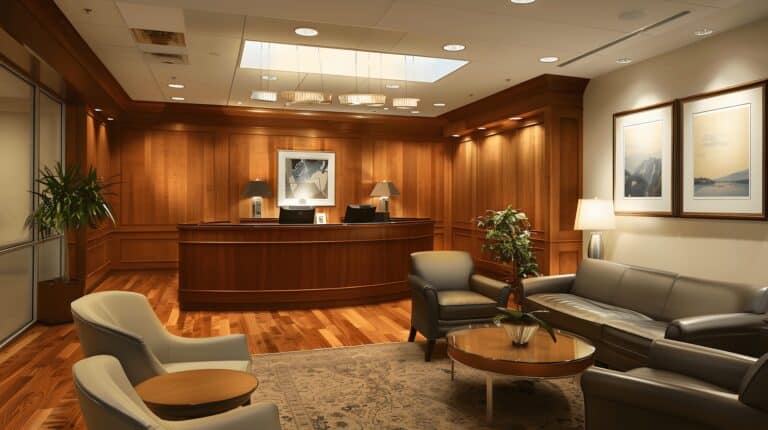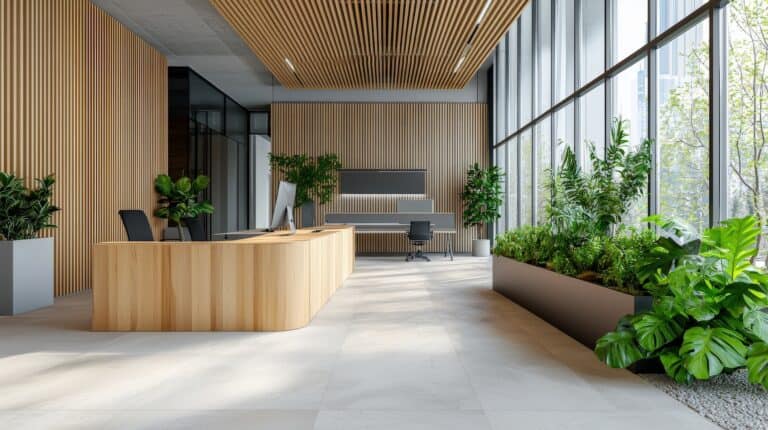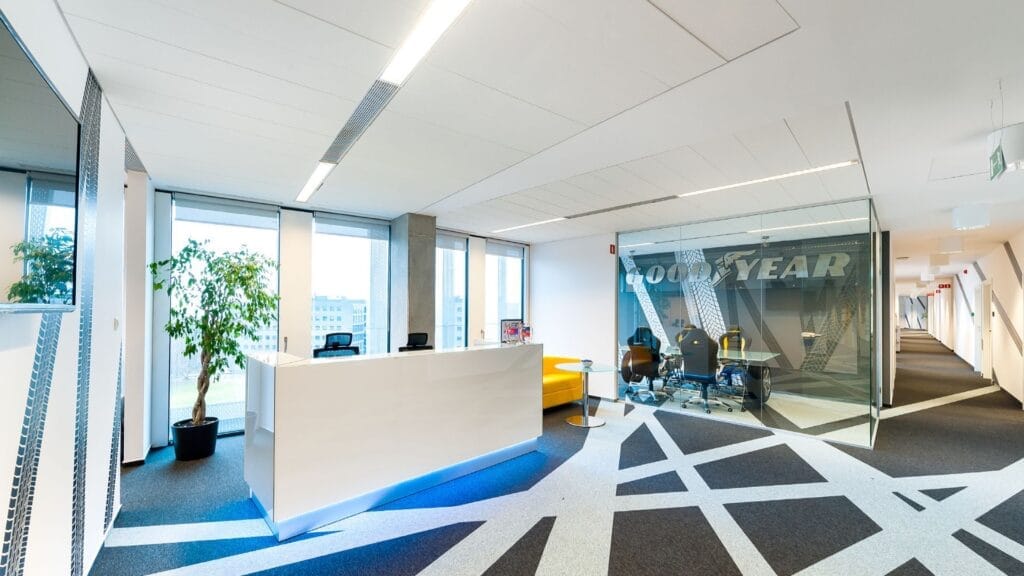Whether your workspace is outdated, your team is growing, or you’re moving into a new building, one thing is clear – it’s time for change. But when it comes to improving your commercial interior, should you opt for a fit-out or a refurbishment?
These two solutions may seem similar, but they serve different purposes. In this guide, we’ll explore the difference between a fit-out and a refurbishment, the benefits of each, and how to choose the right route for your business.
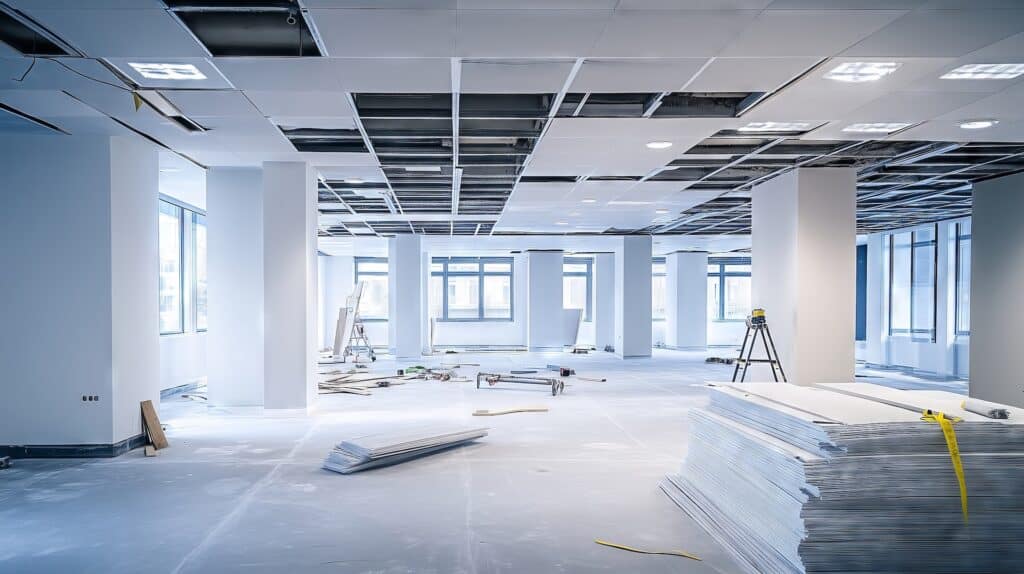
What Is an Office Fit-Out?
An office fit-out is the process of transforming an empty or newly built space into a fully functioning workplace. It involves everything needed to make the space usable – from mechanical and electrical systems to flooring, partitions, furniture, and branding.
The Three Types of Fit-Out
Shell & Core
- The building’s structure is in place, but the interior is a blank shell.
- No services, lighting, or finishes.
- Typically handled by the landlord before a tenant fit-out begins.
Category A Fit-Out
- Adds essential elements like:
- Suspended ceilings
- Raised floors
- Basic lighting and air conditioning
- Still an open plan layout with no internal walls or furnishings.
Category B Fit-Out
- The final stage that tailors the space to your brand and workflow.
- Includes:
- Internal partitions
- Furniture and storage
- Kitchens, breakout spaces
- IT infrastructure and AV
- Signage and decoration
For a more detailed overview of what’s involved, see our Office Fit Out Timeline Guide.
When You Might Need a Fit-Out
- You’re moving into a brand-new or previously unoccupied building.
- You need to completely transform a space for a new purpose (e.g. warehouse to office).
- You want full control over layout, services and design.
What Is an Office Refurbishment?
An office refurbishment updates or reconfigures an existing workspace to make it more effective, modern, or aligned with new business needs. It focuses on enhancing what’s already there, rather than building from scratch.
Common Reasons for Refurbishment
- Improving employee wellbeing and productivity
- Rebranding or updating interiors
- Adapting to new working styles (e.g. hybrid)
- Meeting sustainability goals
- Increasing energy efficiency
Refurbishment can range from light cosmetic upgrades to full internal overhauls, including partitions, lighting, furniture and IT infrastructure.
See our insights on Office Fit-Out Trends for 2025 to understand how refurbishment can reflect future workplace needs.
When a Refurbishment Is Right
- You’re staying in your current space.
- The existing layout can be improved rather than replaced.
- You want to refresh your workplace without starting over.
- You need to minimise downtime and costs.
Key Differences: Fit-Out vs. Refurbishment
Let’s break down how the two approaches compare:
| Aspect | Fit-Out | Refurbishment |
| Scope | Creating a usable space from shell or Cat A | Upgrading or reconfiguring an existing workspace |
| Use Case | New premises or change of use | Staying in same premises |
| Disruption | Can occur before move-in | May require working around live operations |
| Timeline | Usually longer (depends on scope) | Typically shorter |
| Design Control | Full design flexibility | Works within existing constraints |
| Cost | Higher due to full installation | Lower if infrastructure remains |
| Approvals Needed | Often involves planning and building regs | May require fewer permissions depending on changes |
Fit-Out and Refurbishment Case Scenarios
To help visualise when each approach applies, here are some real-world examples:
Example 1: SME Relocating to a New Office
A growing marketing agency moves into a newly built unit. The interior is unfinished. They require:
- Full layout design
- Furniture specification
- Branding and graphics
Solution: Full Cat B fit-out, delivered turnkey.
Example 2: Industrial Mezzanine Conversion
A distribution centre installs a mezzanine floor to house admin teams. The space is currently shell only.
Solution: Fit-out of the mezzanine to create offices, meeting rooms and rest facilities. See our Transform Your Office with Mezzanine Floors article.
Example 3: Head Office Refresh
A law firm wants to retain its central office but modernise the layout and improve staff amenities.
Solution: Refurbishment including breakout areas, ergonomic furniture and upgraded lighting.
How to Decide: Fit-Out or Refurbishment?
Here are some key questions to help you choose the right route:
Are You Moving or Staying Put?
- Moving = fit-out
- Staying = refurbishment
What’s the Condition of the Current Space?
- Is it already furnished or completely empty?
- Is the layout working for your current team structure?
What’s Your Budget?
- Refurbishment can be more cost-effective, especially if services are intact.
- Fit-outs are more expensive but offer greater design control.
Are There Compliance Issues?
- New installations (e.g. mezzanines, major M&E upgrades) will need building regulations.
- Minor refurbishments may not trigger permissions, but it depends on scope.
For guidance on permissions, see Do You Need Planning Permission for a Mezzanine Floor?
What Are Your Time Constraints?
- Fit-outs can be scheduled before you move in.
- Refurbishment projects often need to be phased to minimise downtime.
Can You Do Both?
Yes – many projects are a hybrid of both fit-out and refurbishment. For example:
- A company expands into a second floor requiring a fit-out
- Meanwhile, the ground floor undergoes light refurbishment
This combined approach maximises value while reducing business disruption.
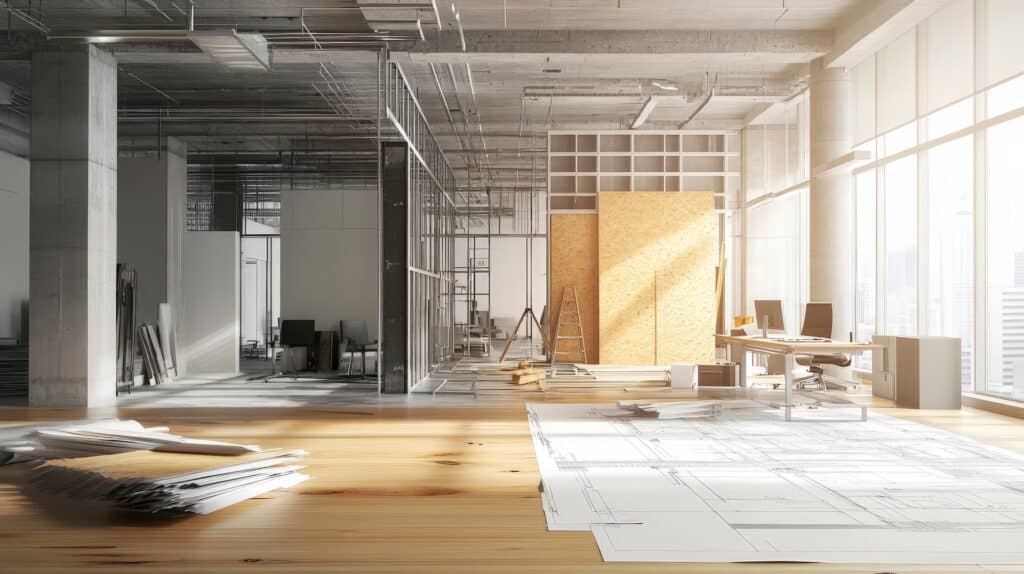
How Corporate Interiors Can Help
At Corporate Interiors, we don’t just design spaces – we help you make smart, informed decisions based on your needs, goals and budget.
We offer:
- Strategic workplace consultancy
- Full Category A & B fit-out services
- High-impact refurbishments for modernising space
- Turnkey delivery from brief to handover
- Expertise across office, education, industrial and public sectors
Explore our full range of Services or Contact Us to discuss your upcoming project.
Final Thoughts
There’s no one-size-fits-all answer when it comes to upgrading your workplace. Both fit-outs and refurbishments can improve how your people work – but the right choice depends on your starting point, ambitions and constraints.
Whether you need to build from scratch or refresh what you already have, our team at Corporate Interiors is here to help you get it right.


